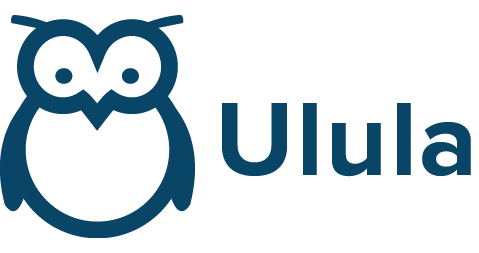In response to burgeoning public interest about supply chain human rights issues, the EU’s mandatory due diligence law, Corporate Sustainability Due Diligence (CSDD), requires EU companies to demonstrate they can identify, prevent, remedy and report on human rights and environmental impacts in their supply chains.
The new CSDD directive means companies will need a better understanding of workers’ lived experiences than ever before.
Considering that 46.2% of companies in Europe had no effective human rights due diligence (HRDD) mechanisms in place in 2020, to say this legislation will cause a shake-up of business practices is the understatement of the year. Thankfully, digital human rights tech is here to bridge the gap.
Learning from the Past
Though the EU proposal was controversially delayed, it was released on February 23, 2022, putting the wheels in motion for a law that will make human rights and environmental due diligence much more than just ESG polish.
We’d be remiss not to remind our readers that now that the law is passed, it’s still in its infancy. We’re only at the end of the beginning. What remains to be seen is how all this fares in the implementation stage, as this is where the law’s antecedents have been left wanting.
Voluntary reporting structures have proven toothless in the past. They haven’t done enough to force companies into action. A 2019 analysis of 1,000 European companies found that only 22.2% actually reported on HRDD processes, and 6.9% made any reference to remedial actions for human rights victims. A 2020 survey of German companies found that only 22% were HRDD compliant. This gives some indication as to why German lawmakers decided to bring forward their own Act on Corporate Due Diligence Obligations in Supply Chains.
Under Australia’s Modern Slavery Act, less than 27% of companies could demonstrate they were taking action to remediate Human Rights risks. Its critics pointed out its failure to protect workers by allowing superficial compliance in the form of “paper promises.” Restricting HRDD to only the “observable basics” isn’t going to cut it anymore. The US is clearly taking notes, with the Uyghur Forced Labour Prevention Act to show for it.
Board members with one eye on the proposal will also be monitoring the complementary EU Corporate Sustainability Reporting Directive (CSRD). The way the wind is blowing, effective HRDD processes will be an investor priority too.
Institutionally enforced, mandatory due diligence is the future. It’s time companies followed suit by updating their approach for the digital age.
Identify & Prevent
Digital human rights impact assessments take a proactive approach to risk mapping. Using mobile devices and platform-ready tools to get feedback directly from the source, rights-holders and workers on the ground are empowered to connect with total anonymity. Intelligent risk mapping can also facilitate intelligent investments, interventions and improved risk prioritisation.
A digital grievance solution is not reliant on working hours or staff availability but can remain online in all timezones, categorising grievances by issue, priority and more. According to the UN Global Compact Network, the most significant grievance issues are usually systemic, with failure to manage cases attributed to the lack of a centralised management system. Digital platforms circumvent this problem with automated data collection and agile grievance response protocols.
System Agility & Due Diligence
Effective due diligence requires a fast, flexible response to grievances. It’s system agility that gives digital platforms the edge when compared to traditional analog grievance reporting.
Businesses with long-tail, international supply chains will encounter as wide a variety of grievances as the breadth of communities and workers they operate with. Implementing a one size fits all policy opens a company up to accusations of cultural inelasticity, and they may find their social licence to do business within a community revoked.
This kind of intransigence can sometimes be a defining factor of analog grievance methods which can lack the flexibility, scalability, or the responsiveness to engage with rights-holders as and when needed, rather than when processed.
Build Safer Houses, Put Out Fewer Fires
Digital HRDD solutions cover offline and online needs that can be tailored to each locality. Comprehensive data collection suites allow businesses to see the big picture in their value-chains and identify systemic issues across locations. Automatic translation enables immediate and localised response to risk reports and meaningful, human-centred communication with rights-holders.
Cast a net wide enough to catch all grievances. Applying a granular approach to grievance management at scale is unique to digital methods, but the flipside is also true: businesses are empowered to effectively manage far more cases than they would with an analog system.
The ability to tailor the platform, the technology, and survey questions makes the process more accessible for workers; a grievance email address is useless when the aggrieved lack internet access. In comparison to hotlines, emails and suggestion boxes, going direct to source also facilitates a two-way, anonymous grievance mechanism, enabling the safe and secure reporting of risks. Auto-translation negates language barriers in multilingual and high migrant population workforces.
A human-centric approach to HRDD shows how far beyond the bare minimum a company is willing to go. After all, an audit that demonstrates that a mechanism is compliant doesn’t mean a whole lot if workers aren’t satisfied with, or even aware of, said mechanism.
Meaningful engagement with workers in supply chains isn’t always easy, but it is affordable. The average cost of carrying out effective HRDD is low, 0.14% of revenue for SMEs and 0.009% for large companies. The clear-cut data and the quick responses that digital solutions enable allow companies to say they care, and show it.
Remedy & Report
Cases can be logged in an accessible case management system designed to facilitate cooperation between suppliers, managers, worker representatives, brands and other third parties. The near real-time data provisions of the system allow for swift cooperation and quicker resolutions.
Integrated and shareable dashboards enable cooperation. The ability to visualise and compare risk information and successes in an aggregated, anonymous format incentivises collaboration between stakeholders. amfori’s Supply Chain Grievance Mechanism programme is one such example of a leading trade association deploying collective digital solutions to HRDD. A case study on their Vietnamese HRDD implementation revealed that 8% of their grievances came through offline channels, 7% through local chat apps, and 85% through the web. Valuable insight for improving HRDD processes.
Digital human rights tech is multilingual, accessible, locally sensitive and, most importantly, scalable. With a few minor tweaks and the appropriate digital training, digital solutions can be deployed across the breadth of an entire supply chain. The data-driven insights made salient through these tools allow companies to take their due diligence disclosures to the next level. With the European Commission’s announcement of the proposed directive on Corporate Sustainability Due Diligence, now is the time for EU companies to implement new practices to address human rights and environmental impacts of their business operations in the global supply chain.
View Ulula’s digital HRDD solution to help companies achieve compliance. Book a call with an Ulula representative here to get started.

